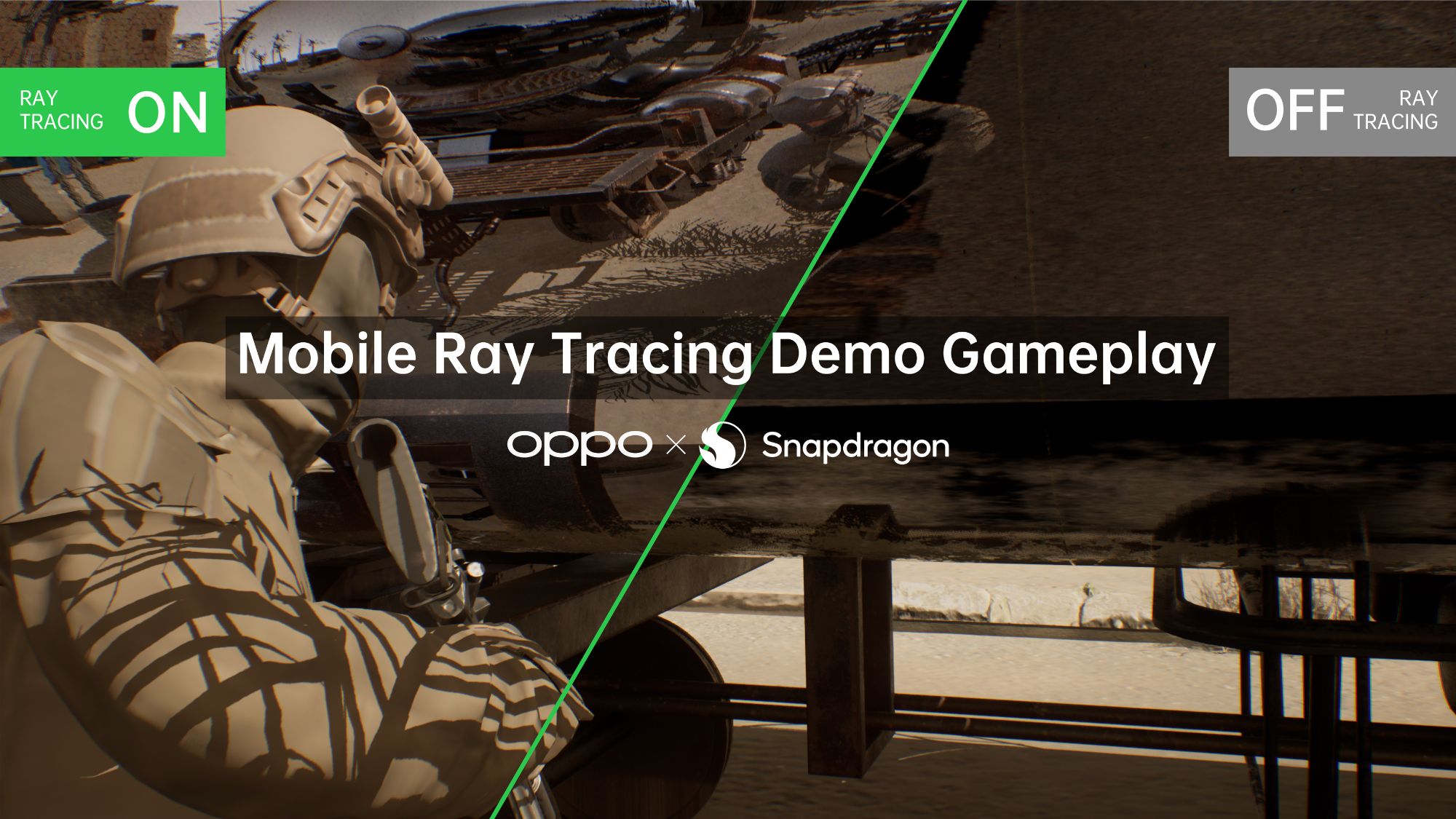OPPO partners with Qualcomm to take ray-tracing forward on smartphones
The move promises significant upgrades to gaming with the new Snapdragon chipset.

What you need to know
- OPPO announces a partnership with Qualcomm to enhance mobile gaming.
- Both Qualcomm and OPPO are working to bring enhanced hardware-accelerated ray tracing to mobile gaming.
- The announcement comes from Snapdragon Tech Summit held in Hawaii.
OPPO is one of the first companies to bring open ray tracing, generally found in PC and consoles, to mobile applications. It is now partnering with Qualcomm to take things forward with real-time hardware-accelerated ray tracing capabilities on the next generation of flagship Android smartphones.
In a shared press release, OPPO announced the partnership with Qualcomm to bring hardware-based ray tracing to the newly announced flagship Snapdragon 8 Gen 2 chipset. For the uninitiated, ray-tracing is an immersive way to experience gaming, which typically requires a lot of computing power that comes from high-end hardware, i.e., either PCs or consoles. It allows for more accurate rendering of optical effects like reflections, shadows, and other ways the light interacts with a scene.
However, smartphones are compact, and you won't find powerful hardware like the latest NVIDIA GeForce RTX 4090 GPU. This is where OPPO and Qualcomm step in to provide more realistic gameplay graphics by incorporating a hardware-based mobile ray-tracing experience on the new Snapdragon 8 Gen 2 that will most likely power many of the best Android phones starting next year.
OPPO has a new in-house developed PhysRay Engine that promises to make ray tracing accessible and efficient for developers. Version 2.0 will work in tandem with Snapdragon 8 Gen 2 to render different ray-tracing effects and textures more smoothly.
Qualcomm also has Variable Rate Shading (VRS) to handle the processing hassle-free, which allows the PhysRay engine to run even smoother. Both work to provide immersive graphics and simultaneously promise to consume less power.
To test this, OPPO created "Camp Gaurd," an FPS shooter game scene developed just to show off the tech. The company claims that the game ran smoothly in 720p at 60fps using a device powered by the Snapdragon 8 Gen 2 at room temperature.
OPPO has also showcased a live demo showcasing PhysRay Engine's capability in supporting Physically-Based Rendering (PBR) textures. These included shadows, reflective surfaces, and difficult ones such as water and its ripples.
Get the latest news from Android Central, your trusted companion in the world of Android



OPPO says it first started to work on ray-tracing solutions for mobile back in 2020, with information gathered from creators, game developers, and game engine developing platforms. OPPO then came up with PhysRay Engine to support mobile ray tracing for the first time.
OPPO has released PhysRay Engine 2.0 for its developers to take advantage of, which should have "ray tracing capabilities, including OPPO-exclusive ray tracing effects, global rendering pipeline, and offline full path tracing."
OPPO believes that ray tracing on smartphones will significantly improve mobile game graphics and that its solution reduces the step for game developers to recreate more realistic effects in their games. OPPO also hopes it could be applied to audio, autonomous driving, and other applications in the near future.
OPPO believes mobile ray tracing is still in the early stages. It's not the first to tout ray-tracing capabilities on a mobile chipset, with solutions from MediaTek and others also supporting some level of the technology. However, it's moving full steam ahead thanks to its partnership with Qualcomm, and the company also plans to integrate mobile ray tracing with ColorOS so that it can release to more developers worldwide.

Vishnu is a freelance news writer for Android Central. Since 2018, he has written about consumer technology, especially smartphones, computers, and every other gizmo connected to the internet. When he is not at the keyboard, you can find him on a long drive or lounging on the couch binge-watching a crime series.
